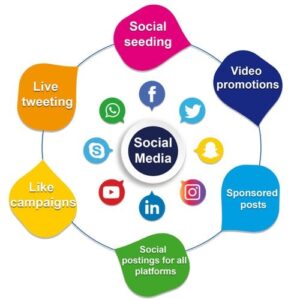Content marketing is a powerful tool for both B2B (Business-to-Business) and B2C (Business-to-Consumer) sectors, but the strategies, approaches, and goals differ significantly between the two. Understanding these differences is crucial for crafting effective content that resonates with your target audience and drives the desired outcomes.
Understanding B2B vs. B2C Content Marketing
B2B Content Marketing focuses on creating content that appeals to other businesses. The decision-making process in B2B is typically longer and involves multiple stakeholders. Content needs to be informative, authoritative, and focused on how a product or service can solve business problems, improve efficiency, or increase ROI.
B2C Content Marketing is aimed at individual consumers. The buying journey is often shorter, and decisions can be more impulsive. Content here is more likely to be emotionally driven, aiming to entertain, inspire, or meet immediate needs.
Key Differences in Content Marketing Strategies
- Audience Targeting and Persona Development
- B2B: The audience in B2B marketing is usually more niche and specific. Content is tailored to professionals, industry leaders, and decision-makers within a company. Detailed buyer personas are developed, often based on job roles, company size, industry, and pain points.
- B2C: B2C content targets a broader audience. Buyer personas may include demographic details such as age, gender, income, and interests. The content often appeals to personal desires, needs, and preferences.
- Content Types and Formats
- B2B: Content types include white papers, case studies, eBooks, webinars, and in-depth blog posts. The focus is on providing value through expertise, detailed analysis, and data-driven insights. Long-form content that dives deep into a subject is more common.
- B2C: Content is generally more varied and includes blog posts, videos, social media updates, infographics, and user-generated content. It’s often shorter, visually engaging, and geared towards quick consumption and sharing.
- Tone and Messaging
- B2B: The tone in B2B content is typically more formal, professional, and authoritative. The messaging revolves around logical reasoning, business benefits, and the practical application of products or services. The goal is to build trust and demonstrate expertise.
- B2C: The tone in B2C content is more conversational, friendly, and relatable. Messaging often focuses on emotional appeal, lifestyle enhancement, and instant gratification. The aim is to create a connection with the audience and motivate immediate action.
- Sales Cycle and Buyer Journey
- B2B: The sales cycle in B2B marketing is longer and more complex. Content is created to nurture leads through multiple stages of the buyer journey—from awareness to consideration to decision-making. Educational content that helps the buyer make informed decisions is crucial.
- B2C: The B2C buyer journey is often shorter, with a focus on quick conversion. Content is designed to attract attention quickly and push the consumer towards making a purchase. The emphasis is on creating urgency and highlighting benefits that resonate with the consumer’s immediate needs.
- Distribution Channels
- B2B: B2B content is often distributed through channels like LinkedIn, industry-specific blogs, professional newsletters, and webinars. SEO and email marketing also play critical roles in reaching decision-makers. LinkedIn, in particular, is a key platform for B2B marketers.
- B2C: B2C content is typically shared on social media platforms like Facebook, Instagram, Twitter, and YouTube. Paid advertising, influencer marketing, and content that encourages social sharing are vital in B2C content strategies.
- Metrics and KPIs
- B2B: Key performance indicators (KPIs) for B2B content marketing often include lead generation, conversion rates, website traffic from specific sources, and engagement metrics like time on page and download rates of gated content.
- B2C: In B2C, metrics might focus more on social media engagement (likes, shares, comments), brand awareness, website traffic, and sales conversions. The ROI is often measured by the immediate impact on sales and customer acquisition.
Conclusion
Both B2B and B2C content marketing strategies share the common goal of driving business success, but they do so in different ways. B2B content is more focused on building relationships, providing value through expertise, and guiding a lengthy decision-making process. In contrast, B2C content marketing is more about engaging a broad audience, sparking interest quickly, and driving fast conversions through emotional appeal.
Understanding these distinctions allows marketers to tailor their strategies effectively, ensuring that the content they create resonates with their specific audience, whether in a B2B or B2C context. By leveraging the right content marketing tactics for your audience, you can enhance engagement, build stronger relationships, and ultimately drive more successful outcomes for your business.




You completed certain fine points there. I did a search on the matter and found the majority of folks will have the same opinion with your blog.
magnificent issues altogether, you just received a new reader. What would you recommend in regards to your post that you simply made a few days in the past? Any positive?
Whats Happening i am new to this, I stumbled upon this I’ve discovered It absolutely useful and it has aided me out loads. I am hoping to contribute & help different users like its aided me. Good job.